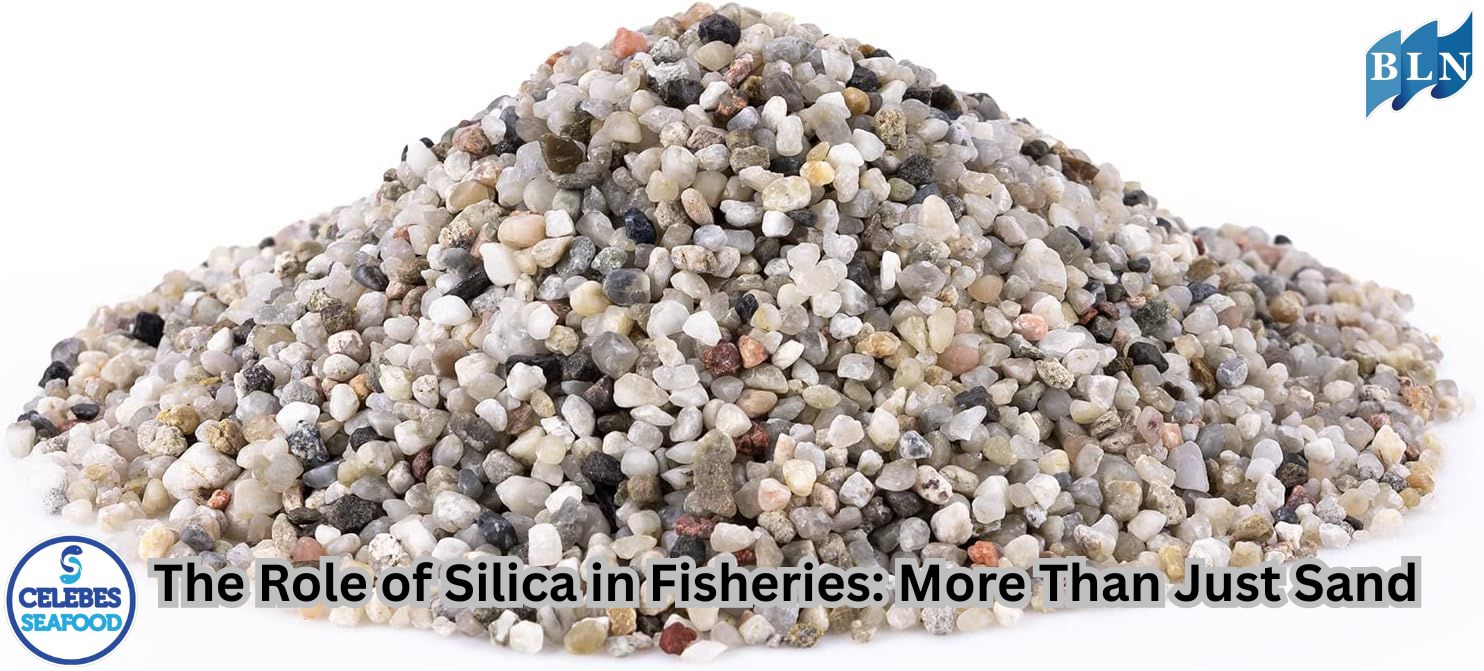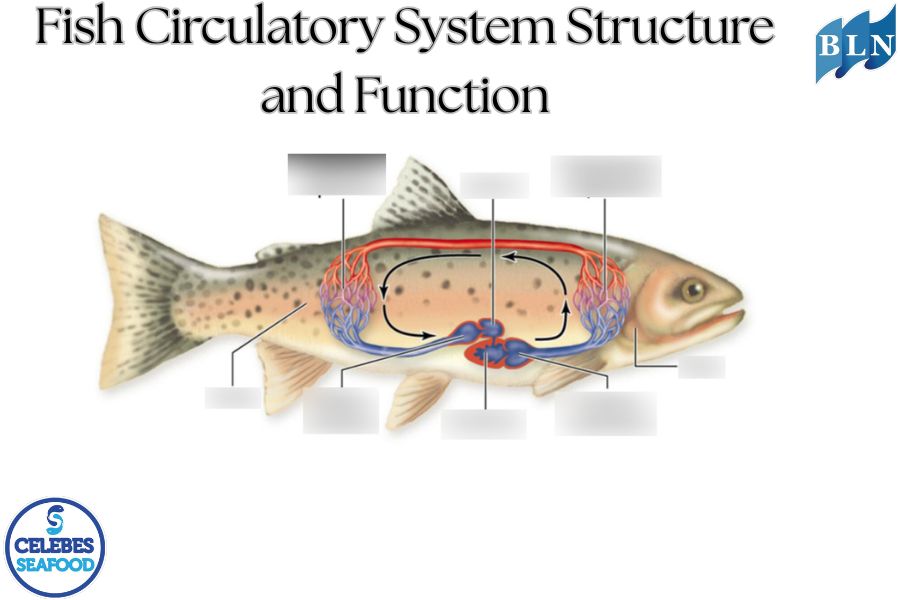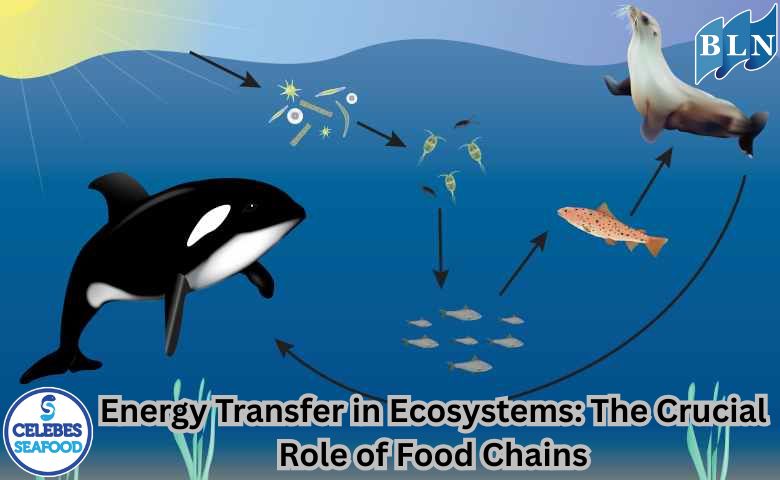The Role of Silica in Fisheries: More Than Just Sand
By. Tri - 17 Jun 2025
lautnusantara.com_ Silica, or silicon dioxide (SiO2), is often primarily known as a major component of sand and rock. However, beyond its abundant presence, silica's increasingly recognized role is crucial in the fisheries sector, impacting aquatic health, the growth of cultured organisms, and environmental management. This article will explore various aspects of silica in fisheries, highlighting its benefits and considerations.
Silica in Natural Aquatic Environments
In natural aquatic environments, silica is found in various forms, including dissolved silica (silicic acid) and solid particles. The main sources of silica in water bodies are the weathering of rocks and soil, as well as the biological activity of certain organisms.
- Diatoms: These microscopic organisms are among the largest consumers of silica in aquatic ecosystems. Diatoms construct their cell walls (frustules) from silica. They are vital primary producers in many aquatic food chains, and silica availability often limits their population growth. A healthy diatom population supports a balanced ecosystem.
- Sediments: Silica is a major component of bottom sediments in aquatic environments. While mostly insoluble, the interaction between water and sediment can influence the silica cycle in the water column.
Benefits of Silica in Aquaculture (Fish Farming)
In aquaculture, silica is increasingly being researched and applied due to its potential to enhance productivity and sustainability.
- Improving Water Quality:
- Nutrient Adsorbent: Silica, particularly in certain forms like silica-rich zeolites, can act as an adsorbent for ammonia and nitrite, two toxic nitrogen compounds that often accumulate in culture ponds. This helps maintain optimal water quality parameters for fish or shrimp growth.
- Water Clarification: Silica particles can aid in the flocculation of suspended particles, making the water clearer and reducing turbidity, which can affect light penetration and gill health.
- Enhancing Fish/Shrimp Health and Growth:
- Skeletal and Cuticle Formation: For aquatic organisms like shrimp and other crustaceans, silica is believed to play a role in the molting process and cuticle hardening. A strong cuticle is essential for protection against injury and disease.
- Immune Response: Some studies suggest that silica supplementation in feed can boost non-specific immune responses in fish and shrimp, making them more resilient to pathogen infections. This is particularly relevant in intensive farming systems where stress and disease are frequent challenges.
- Feed Efficiency: By improving digestive health and immune responses, silica can indirectly contribute to increased feed utilization efficiency, reducing the FCR (Food Conversion Ratio).
- Diatom Support: In traditional or semi-intensive pond culture systems, silica supplementation can promote healthy diatom growth, which serves as a crucial natural food source for fish or shrimp larvae and contributes to pond ecosystem stability.
- Specific Applications:
- Biological Filter Media: Silica sand is a common filter media used in recirculating aquaculture systems (RAS) and biofilters, providing a surface for nitrifying bacteria to grow and process nitrogenous waste.
- Feed Pellet Binders: Silica can be used as a binding agent in feed formulations, helping to maintain pellet stability in water and reduce pollution.
- Feed Supplements: Silica products, such as silica gel or silicate minerals, can be formulated as supplements in fish or shrimp feed.
Considerations and Challenges
Despite its many potentials, the use of silica in fisheries also requires careful consideration:
- Form and Particle Size: The effectiveness of silica highly depends on its form (amorphous vs. crystalline), particle size, and surface area. Amorphous silica is generally safer and more biologically available than crystalline silica.
- Appropriate Dosage: As with any supplement, excessive doses of silica might be detrimental or provide no additional benefit. Further research is needed to determine optimal dosages for different species and culture systems.
- Cost: While silica is relatively abundant, the cost of specific processing and formulations might be a factor on a commercial scale.
- Environmental Impact: Management of silica-containing waste should be considered, although silica itself is a naturally occurring, non-toxic component in its non-crystalline forms.
Silica is an often-overlooked yet crucial element in the dynamics of aquatic ecosystems and holds significant potential for enhancing aquaculture practices. From its role in supporting the food chain through diatoms to its ability to improve water quality, health, and growth of cultured organisms, silica offers sustainable solutions. With proper research and application, silica can become an important tool for aquaculturists to achieve more efficient, healthy, and environmentally friendly production.
If you are interested in our Coral Trout Fillet Skin On, CORAL TROUT WGG WHOLE GILLED GUTTED, TOMATO COD WHOLE GILLED GUTTED please do not hesitate to contact us through email and/or whatsapp.
.jpg)
.jpg)



.jpg)
.jpg)
